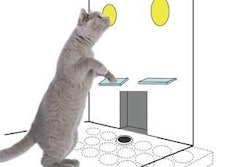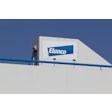Accusations of using fillers: Whether product promotion or informational website, the term "filler" is a popular topic of scorn. Many petfood packages make bold statements that their recipe "contains no fillers," has "no added fillers," or never uses "cheap fillers." Clearly the message is that these things called "fillers" are bad news and should be avoided. But, is this a legitimate warning or are we unwittingly being sensitized to select against a broad category of potentially beneficial ingredients?
What gets classified as a "filler" is up to whomever makes the statement because it isn't a defined ingredient term by any regulatory body or nutrition text. This ambiguity seems to be an insidious asset. "No fillers" has become a throw-away phrase meant to play on our perceptions and fears of being cheated and harmed. Sure, no one wants to be cheated and we most certainly don't want to use harmful ingredients in our pets' food. But this simple phrase being used to stratify good from better and better from best has created confusion for consumers and tainted the reputation of some very functional and high-quality ingredients.
Defining fillers: So, what exactly is a "filler" and why is everyone trying to warn us away? The implication from the market, based on an informal survey of claims and blogs, is that they are supposedly cheap and only good for petfood company profits, they are devoid of nutrients, they are used to make the pet feel full, and they contain toxic elements.
Digging a bit further back in history, the term "filler" was common slang used to describe an entire category of secondary products from grain milling typically fed back through livestock diets. The list would include things like hulls, husks, chaff, cleanings, weeds, dust and stalks. Interestingly, these items are specifically defined ingredient parts that one could actually claim their food does or does not possess. With a few exceptions, these items haven't been used in mainstream petfoods for decades.
On the other end of the spectrum, ingredients like rice bran, tomato pomace, beet pulp, soy hulls and pea fiber have been derided by some as fillers. To this we can take exception. These are quality ingredients intentionally added to petfoods as an aid to digestion, enhanced satiety, reduced caloric density, healthy colonic fermentation and stool consistency. Most of these items are well supported with significant research and documentation to be beneficial, safe and effective.
Real utility to fillers: There is another little-discussed and not-well-understood need that a "filler" might play. If we adopt the working definition that a filler is used to fill or make full, then in the world of formulation, a filler could help us achieve a full measure-100%- once the targeted ingredients are included to meet the required nutrient parameters. What most people don't realize is that there is always room leftover in a commercial formula once we meet the animal's essential needs.
In dry foods, we commonly use some type of carbohydrate (starch or fiber) and in canned foods it is often water that fills this gap. In either case it is important that we use some type of ingredient that does not disrupt the delicate nutrient balance we have worked hard to achieve. The purist "home prepared" folks might take exception and proclaim that they don't use fillers, but what they don't realize is their foods are typically over-formulated for the animal's needs and can lead to nutritional imbalances detrimental to the animal's health. So, to appropriate the cliché, less is more (healthy).
This takes us to the next thought along those lines. Fillers are often accused of being devoid of nutrition. With over 30% of dogs and cats overweight or obese, more nutrient dense food is not necessarily the best direction to help us gain some measure of control. At the root of the challenge is not the nutritional composition of the food, but rather managing portion control by pet owners. Most people just can't effectively limit food to their pets. So, by using a selection of ingredients that help dilute the caloric density of the diet we can provide real help in managing calorie consumption. This is a perfect role for ingredients like cellulose and peanut hulls that are almost nutritionally inert. But, critics have described these ingredients to the market as fillers.
Other concerns with fillers: Some would point out that "fillers" can cause allergies. To that the simple answer is: no more than their source or origin. For instance, wheat bran would be no more allergenic than wheat, rice bran no more than rice and soy hulls no more than soybeans. If the dog or cat is truly allergic to an ingredient in their diet, then an elimination diet regime should be conducted in order to determine the true antigen and then avoid that ingredient.
There are also claims that "fillers" are unsafe because they've been involved in recalls. The ingredients that have been swept into this thread of reasoning and branded as "fillers" are things like corn and wheat midds which were contaminated by naturally occurring mold toxins (mycotoxins) like vomitoxin and aflatoxin. But quality issues can happen with any ingredient. The important thing is rigorous quality control and supply stream management, not name-calling.
Giving their full measure: Fillers are assumed to be cheap; however, the ingredients often accused of falling into this category can be quite pricey (e.g., cellulose) and may increase, not decrease, the cost of the food. So in the end, the only real cheap filler used in modern petfood may be name-calling and cynicism. These fill the information void and create fear and doubt about an undefined ingredient category, when in point of fact the oft-maligned ingredients characterized as fillers may actually be valuable tools to help us better manage the nutritional composition of pet diets and still give the customer their full measure.















